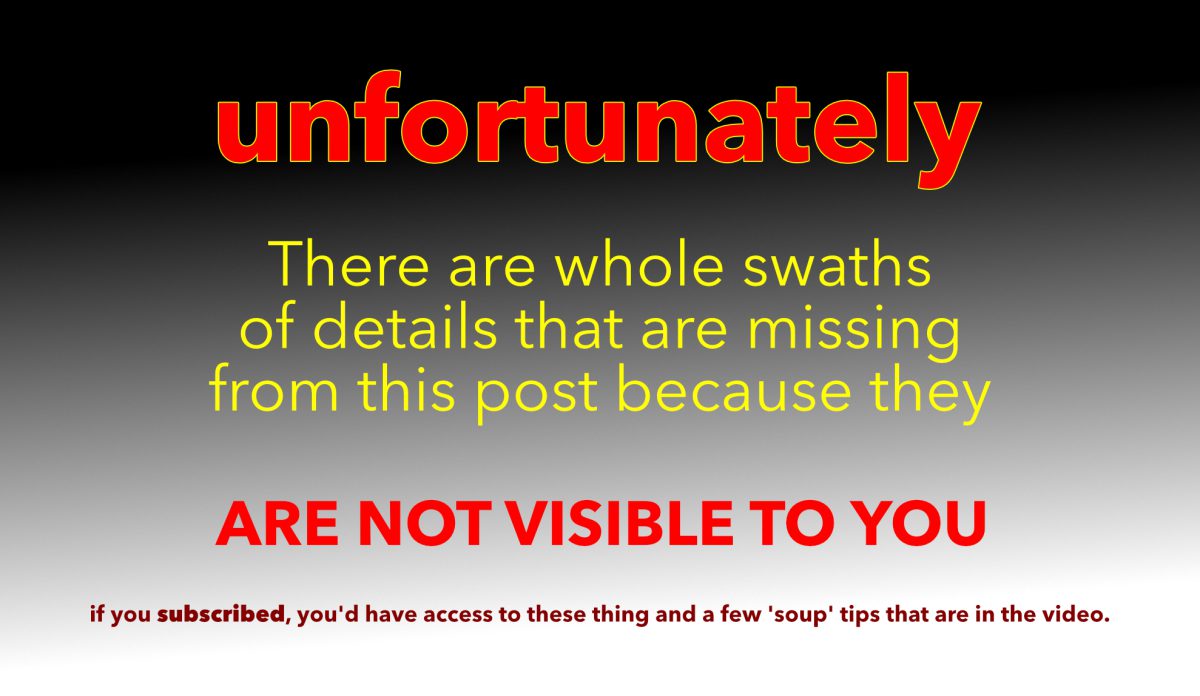For a lot of people, the idea of Leading a dance in Argentine Tango either strikes fear into their heart, and they psyche themselves out to the point where they believe that they can’t do it. Or they overthink the thing to death and reach the same point of thinking they can’t do it or that it’s exceptionally difficult. Or there are those that believe that they feel comfortable enough with Leading a dance. In all three of these types of Leads, regardless of the role (Leading or Following), there’s a moment of “What’s Next ?” right at the beginning of a song. For the Follower, the moment comes in the form of the Follower asking the question in their mind, “What do they (the Lead) want ?” over and over again in their minds. Even though they’ve settled into the embrace, until there is movement, until there is some kind of signal (resistance and compression based or intention based dancing) the Follower exists in a heightened state of hyper-awareness of asking this question. For the Lead, the question becomes “What am I going to do ?” over and over and over again until they’re either forced to move because they’re holding up the line of dance or they fall into their standard opening. In both cases, the dance starts from a place of confusion and cluelessness of “What’s Next ?”. What if as a Lead or as a Follower that state of confusion, that state of feeling dumbfounded were to completely disappear ? What would happen to your abilities as a dancer if you created a series of Openings (and closings) to the dance. Not a series of intricate patterns, no….but rather, simple ways to start a dance that put both Lead and Follower at ease ? That’s where today’s Tango Topic picks up. It addresses what to do at the beginning of the dance with 7 Ways to Start a Dance, as well as 9 Ways not to Start a Dance. So without further yappment, Tango Topics presents the importance of Seven Argentine Starters!
What Is A ‘Starter’ ? A ‘Starter’ is a bit misleading, no pun intended because one might erroneously reach the conclusion that an Argentine Starter was a specific piece of vocabulary, a pattern, that you can use. Unfortunately that’s not the case. It’s more of a simple primer, actually 7 simple primers, that you can use to create more complex choices. Think of an Argentine Leading Starter as something a Vaudeville dancer would call “Vamping” until you’re ready for something else. Which roughly translates from a Vaudeville perspective of doing the same thing over and over and over until everyone is on the same page, doing what they need to be doing, in the right key, on the right note, singing the right words, in the same steps, and then they can proceed with the next thing. The same thing is true in Argentine Tango to an extent. In it’s simplest form an Argentine Leading Starter is a series of simple movements to begin a dance with. That’s it, that’s all. There’s nothing grandiose about it but there is something calming about it. And that’s the important part. Calming both partners. We desire calm, rational, clearly thought out movement, as well as thought and creating a state of placid, serene, almost tranquil state of mind and body for three distinct purposes: 1.) Getting to a deeper state of integration with one’s partner. 2.) Creating a heightened state of readiness for all that may occur that is as much about awareness as it is about being delightful. 3.) Removing any and all nervousness and confusion because we’re employing simple things that can translate to more complex things later on. This is an Argentine Starter.

Follower’s Notation. It should be noted that if you’re a Follower, just because this topic sounds like “Leading…” whatever, that shouldn’t pay attention. When the reality is that you DO in fact want to pay attention to this stuff for a wide variety of reasons which we’ll get to in the Follower’s Perspective below.
The Free Tip. There’s a ton of free information in this article. It may not seem like it, but there’s a ton of information in there. However in keeping with adding a free tip to keep you interested….hahahahahaha, </span><span class=”s2″>Item Number Six is a Dark Side Opening. Why is that relevant ? Go look at the Dark Side Salida. That will give you a few ideas of what else you could do.
About The Video. This video is 25m:13s in length in 4 sections. Both lead and follower technique are combined and integrated into the video. Bold items below shown in video sample video above.
Introduction – 00:02:43
9 Ways Not To Start A Dance – 00:06:08
7 Ways to Start A Dance – 00:13:59
Closure With Examples – 00:01:51

